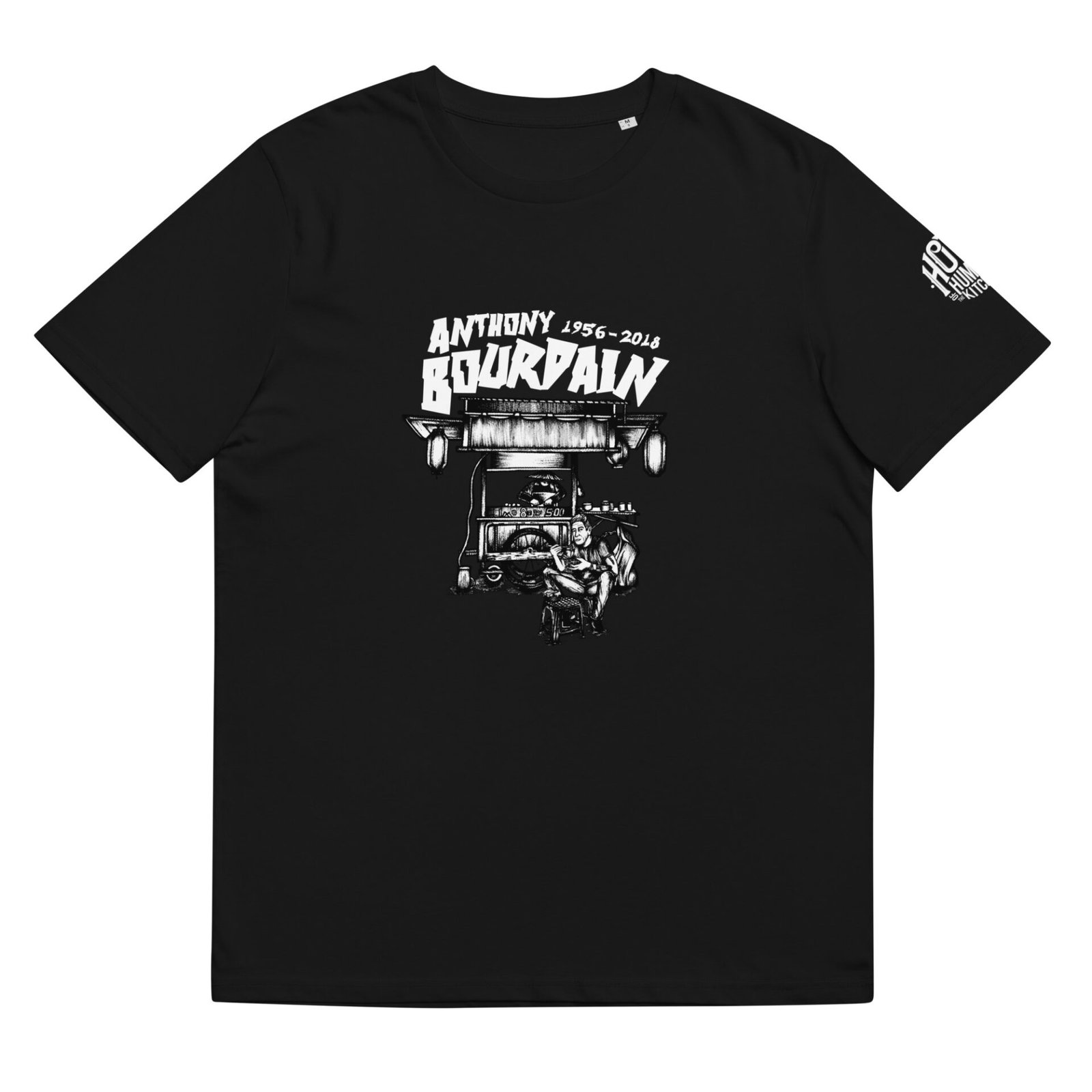Cooking Through Purpose, Not Pressure
Building a kitchen where well-being and passion coexist.

Carlos R. Alpizar
I was six years old when I learned to cook rice for the first time. That moment ignited a passion in me. I became obsessed with food, enhancing its flavor and experiencing the satisfaction it brings people. To me, cooking is an expression of love and is meant to be shared.
But like so many others, I tried to follow the expected path. I started studying law because it was the “right” choice. But I quickly realized cooking was the only thing I truly wanted to do. With my brother’s support, I found the courage to pursue gastronomy and chase what truly made sense for me.
I studied culinary arts, and through that journey, I met my first mentor, Chef Luis Alarcón. He truly opened my eyes to the vast and beautiful world of gastronomy. Before that, I had a narrow view of cooking, but he taught me to appreciate its depth and endless possibilities.
The first time I stepped into a professional kitchen was while I was still studying, and it was a wake-up call. It showed me how tough and demanding this career can be and how much dedication it requires.
One of my biggest challenges was my ego. I thought I knew everything when, in reality, I was just starting out. A former boss once told me, “You have talent and passion, but your ego is holding you back.” That moment changed my perspective. Fortunately, I met people who helped me realize that mistakes aren’t failures, they are growth opportunities and for refining my craft.
The pandemic nearly broke me. I lost my direction and spark. But I turned inward, reconnected with my craft, and started sharing my journey online. The support I received from the industry, Costa Ricans, and strangers brought me back. It reminded me why I started.
Now, as I work on building my first restaurant, the real journey is just beginning. I want my team to have both a career and a life. The industry glorifies burnout, but that’s not sustainable. A fair kitchen is one where passion and well-being coexist. And above all, I want Costa Rican cuisine to be recognized. Our gastronomy is rich and diverse but often overlooked. Through my work, my food, and my voice, I want to change that.
Secret Sauce
- What’s the most unexpected ingredient you’ve ever worked with, and how did it change your perspective on cooking?
I think it would be escamoles—ant eggs. They’re not commonly seen, but some Indigenous communities collect and eat them sautéed, mixed into rice, or in tortillas. It was one of those experiences that made me realize I wasn’t seeing the whole picture. I wasn’t truly paying attention to my surroundings, my country, its biodiversity, or its history. It was a turning point in my perspective—understanding that Costa Rica’s gastronomy is incredibly diverse. We have ingredients that are either unheard of elsewhere or simply not consumed, yet they are part of our food culture here. That changed the way I see and approach cooking.
- What’s your “guilty pleasure” meal?
When I was a kid, my guilty pleasure was a bowl of rice with ketchup—simple, a little weird, but I loved it. Now, it’s a good cheeseburger with fries and a Coke, usually from a fast-food chain. It’s quick, delicious, and honestly, I just love it. Sometimes, there’s nothing better than that. In Costa Rica, we’d call it a ‘salvatandas’—the perfect lifesaver meal.
- A food trend that you hate and why?
Drenching everything in cheese—like those burgers covered in half a kilo of melted cheese. I just don’t get it. It feels excessive, unnecessary, and honestly, a bit gross. There’s a limit to everything, and one of the phrases I live by in the kitchen is ‘less is more.
- What’s the craziest shift you’ve ever worked in the kitchen? What happened, and how did you manage to get through it?
We worked at an electronic music festival in Guanacaste, Costa Rica a few years ago. Our mise en place was done in a school, then transported to the festival site. We had chefs from all over the world cooking for a massive crowd. The location—a finca with a lot of dust and sand—made everything even more intense. The relentless rush of 15 to 20 people ordering at a time never stopped. At first, we didn’t have a clear leader, so we took turns running the kitchen based on the day’s specials. It was pure chaos—starting at 8 AM, finishing at 2 or 3 AM—but also incredible. The energy, the music, the adrenaline of service… exhausting, but unforgettable.
5. What happened, and how did you manage to get through it?
Honestly, it was a mix of pure adrenaline, the festival’s incredible energy, and our fantastic team. We supported each other and figured things out after that first chaotic day, and from there, it became easier—though still exhausting. We made the most of any downtime to rest, and when that wasn’t possible, we ran on coffee, Red Bull, and pure determination. What made it even crazier was that our small kitchen—maybe 10 meters wide by 4 or 5 meters long—was the only place serving food at the entire festival. We had over 15,000 people, and this tiny spot was their only option. It wouldn’t have been possible if it hadn’t been for the knowledge, experience, and teamwork within that crew. But thanks to them—and a lot of Red Bull—we pulled it off.
- What tips would you give to other cooks and chefs to help them navigate their culinary careers and find peace amid the chaos of the kitchen?
Take care of your physical and mental health. Passion alone won’t get you where you want to be—you need hard work, planning, and clear goals. Breaking big ambitions into smaller steps makes them more achievable. But above all, prioritize your well-being. Understand that nothing in the kitchen is personal. Everyone is under pressure, especially during a rush, and mistakes happen. Once service is over, take a step back and see things for what they were—just the chaos of the moment. Learn to own your words, apologize if needed, and have the maturity to recognize when your reaction wasn’t the best. Growth comes from reflection and constant improvement.
- What’s an underrated ingredient and why?
At least here in Costa Rica, I think the flor de Itabo (yucca flower) is one of the most underrated ingredients. It’s a flower native to Central America with a distinct bitterness that, when handled correctly, can elevate a dish in incredible ways. I’ve tried it in different preparations, and its intensity enhances flavors beautifully. Even though it’s only available for a few months of the year, it’s truly special. I love how its bitterness can be balanced to bring out the best in a dish. I really hope more people start using it.
8. What’s a must-try dish from your kitchen or the one you’re proudest to have prepared?
I’d say lengua de res en leche with almost-burnt tortillas. It’s a dish my grandmother used to make and one of the defining recipes from my maternal side. As far as I know, only two families in Costa Rica still prepare it—one of them being mine. It’s incredibly rich, both in flavor and history. The reason behind its creation, the way it has been passed down, makes it even more special. Everyone I’ve cooked it for has been blown away by it. Having this dish in my repertoire, giving my grandmothers and my family the recognition they deserve, is something I’m truly proud of. And beyond its history, the depth of flavor is just surreal.
About Your City!
San José, Costa Rica
- If Anthony Bourdain or a chef came to your city, what would be the perfect tour itinerary from breakfast to dinner?
I’d start with breakfast at Caféoteca—great coffee, simple and well-done food. Then, I’d head to Mercado Central or Mercado Urbano to dive into Costa Rican culture, explore local ingredients, and see what makes our food unique.
For an afternoon coffee break, I’d stop by Franco for a quick cup of coffee before heading to dinner. To finish the day, I’d take them to Sikwa. Right now, I’d say Sikwa or Conservatorium are two of the best spots in the city, but if I had to pick just one, I’d go with Sikwa.
If they had more time, there are plenty of other great spots to explore, but this would be my ideal itinerary for a one-day trip.
- Recommended Places in your city:
- Food Markets: Mercado Central de San José, Feria del Agricultor de Zapote.
- Dish or food you must try: Queso Pinto con extra de chicharrón (Feria del Agricultor de Zapote).
- Cultural Events: Festival Internacional de las Artes (FIA).
- Neighborhoods: Barrio Amón.
- Popups: Katuk Pop Up.
- Street Food/Food Trucks: Santería Handmade Street Food, Burga.
- Restaurants: Sikwa, Conservatorium.
- Cafes: Caféoteca, Franco.
- Bars: Pocket, Mercado La California.
- Hotel/Hostel: Hotel Grano de Oro.





